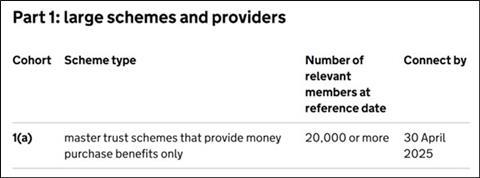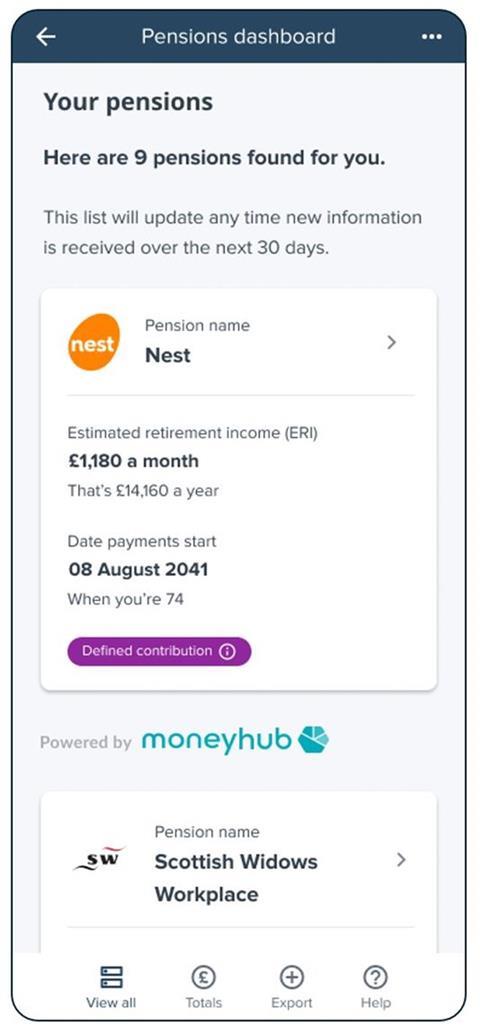Richard Smith presents the first in a series of articles exploring how pension providers are preparing to connect to the pension dashboards ecosystem.
How many pensions have you got?
I’ve got nine. Quite a lot, but not unheard of for a ‘Gen X’ like me in my late 50s. It’s a mix: two active defined contribution (DC) pensions, two deferred DC, three deferred defined benefit, some Pension Protection Fund compensation, and my state pension, of course.
In just nine months’ time, these pensions will start being connected to the dashboards ecosystem.
But how is that happening? What are these different organisations doing to prepare?
As I’ve got nine pensions, and there are nine months to go until live dashboards connections, I thought I’d write a series of nine monthly case studies. This series – ‘Dashboards Nine-Nine’ – will explain how each of my different pension providers and schemes are preparing for dashboards.
It’s a random cross-section of providers, of course, generated by the randomness of my career. But these nine will give a good impression of how the industry is getting ready for dashboards.
Pension 1: Nest
Like over 13 million others, I have a pension in the National Employment Savings Trust, or Nest.
Nest is administered by Tata Consulting Services. Unsurprisingly, the Nest trustees are also using Tata to connect their 13 million pension records to the dashboards ecosystem. Nest and Tata are working together to ensure they are ready by their connection deadline of 30 April 2025.

Having selected a data connection technology partner, all pension providers and schemes must make some big decisions about the way they are going to connect to, and support use of, dashboards.
Key decision: Matching
When I use a dashboard, how is Nest going to compare my personal details as a dashboard user against its pension records, to see if it has a pension for me?
Nest’s initial approach will be based on the four data elements provided in the Find Request from the Pensions Dashboards Programme’s (PDP) Central Digital Architecture, as verified by the PDP Central Identity Service:
- First name (PDP data element 1.001, with verification in 1.002)
- Surname (1.003 / 1.004)
- Date of birth (1.005 / 1.006)
- Address (1.014-1.020 / 1.022)
I can also choose to include my National Insurance number (1.007).
However, Nest’s director of customer engagement Mark Rowlands says: “Like all schemes, Nest needs to balance the risks of matching incorrectly with our duty to provide information to the user and provide the best possible user experience.
“Beta testing will be critically important in informing the matching criteria and whether any changes are required. Understanding the customer experience, initially using the MoneyHelper dashboard in this test phase, is equally important and we are keen to see how MoneyHelper deliver the first working dashboard.”
Key decision: Data
Initially, from its “connect by” date of 30 April 2025, Nest will return View Data – like my estimated retirement income (data element 2.306) – from my most recent annual statement.
Right now, the estimated retirement income is £1,183.33 a month, taken from my statement as of 31 March 2023, as allowed by the Dashboards Regulations. I received this statement nearly 13 months ago in July 2023.

Rowlands told me: “Our goal is to review this and improve over time, working towards an end state where we can provide a more up-to-date set of data. We believe the best experience will be to provide data as close to real-time as possible.”
To illustrate his point about the “best experience”, consider these images.

This first one shows what my Nest estimated retirement income might look like on the main mandatory page (the Summary List) of a dashboard, displaying the figure as of 31 March 2023.

This second image shows what I see when I log in to the Nest website or app. It’s my Nest retirement pot as of July 2024 – more than 15 months later than the dashboard figure.
There are two potential issues here in terms of consumer experience.
A dashboard must lead with my Nest estimated retirement income and not my total pot, whereas Nest’s website and app both lead with the pot value and a link to “calculate your estimated income”.
The estimated retirement income displayed on a dashboard could be many months ‘older’ than the pot shown on the Nest website or app, which is updated at the end of the previous working day.
The extent to which these are significant issues for users of different types must be thoroughly tested with real consumers from April. The outcomes of this testing could potentially hasten Nest’s efforts to “work towards an end state where we provide more up-to-date data” to dashboards.
(By the way, I set my Nest retirement date to 74 after my Pension Wise appointment when I turned 50. I’ll say more about why in a later article in this Dashboards Nine-Nine series.)
Key decision: Support
How will demand for Nest’s administration services change once users like me start seeing our Nest pensions on dashboards?
Nest knows there will be an administration element to the use of dashboards. It says it is working with the PDP to understand how volumes might increase throughout the beta testing phase, right through to the public launch of dashboards and beyond.
Rowlands says: “We want to ensure we have the right resource in place to ensure we can provide the right support for everyone who contacts Nest as a result of using a dashboard.
“Initially, we will be asking dashboard users to get in touch with us with a simple phone call. We anticipate the majority of people contacting us will be to confirm whether a possible match becomes a match made or no match.”
Nine is the magic number
Testing of dashboards with real consumers is absolutely critical for Nest to be able to ratify all its key matching, data and support decisions. These in turn will impact my experience as a user.
When I say dashboards with an ‘s’, how many dashboards are there going to be?
As it happens, there will potentially be nine dashboards to choose from, at least. These will be operated by Aviva, Just Group, Legal & General, Lloyds Bank, Mintago, Moneyhub, Scottish Widows and Standard Life, as well as the MoneyHelper dashboard from the Money & Pensions Service.
Which dashboard will you use? More on that in next month’s article.
Richard Smith is an independent pensions dashboards consultant.
Dashboards Nine-Nine: How Nest is preparing for connection day
- 1
 Currently reading
Currently readingDashboards Nine-Nine: How Nest is preparing for connection day
- 2
- 3
- 4
- 5
- 6
- 7
- 8
- 9

























